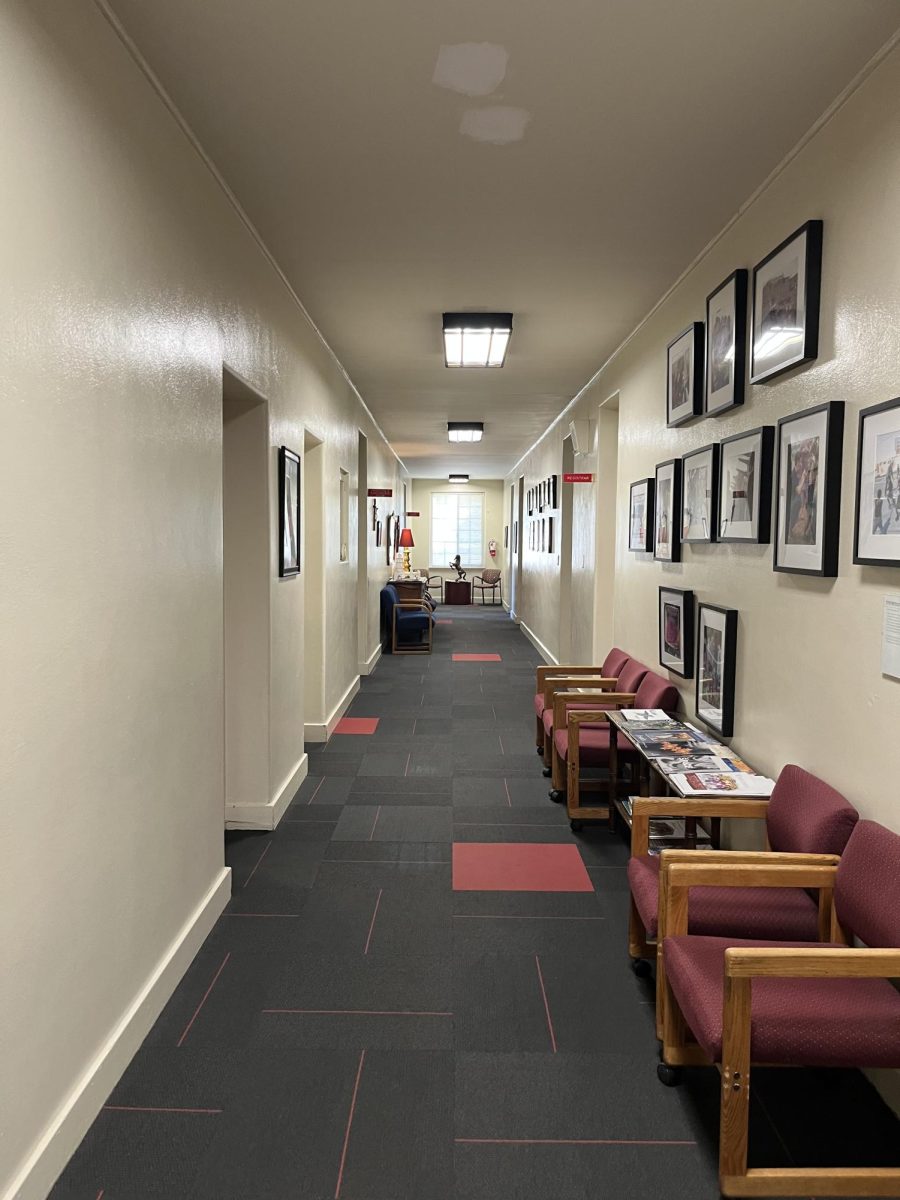Photo by Juan Sanchez ’20 | First place winner Daniel Noon ’20 stands by his first place winning project.
By Carl Justice ’21 and Juan Sanchez ’20
THE ROUNDUP
The science fair wrapped up on Thursday, February 21 with the winners in each category going to the state championships.
First place was a tie between Bryan Gopal ’19 and Daniel Noon ’20. Noon’s project was a computational radiation shield program.
Second place went to Alex Izmailov ’20 and third was a tie between Amit Das ’21 and the team of Rajveer Walia ’21 and Manas Sharma ’19.
Noon created his model on an open source program that the European Space Agency also uses, and when tested against it, Noon’s model was about one-hundred times cheaper, while simultaneously being seven times thinner.
“It’s not necessarily for use for galactic space travel, but it could be used as a cheaper bunker material and is safer than concrete,” Noon said.
Other applications, Noon explains, could include use in power plants so that they are able to research more dangerous particles, like gamma rays.
“The only problem really is that it’s very heavy,” said Noon. “Additionally, it can attract a lot of heat, so it’s not a very good insulating material. It’s just a lot of different layers of metal.”
Depending on how the state science fair works out for Noon, he will continue this line of research or explore different areas of science.
Das will be participating in the state science fair in the Health and Medicine category.
“My project was about predicting the survival of patients who suffer from Glioblastoma, which is a brain cancer,” Das said.
He said that the reason he chose the project was because many recognizable people, like former Senator John McCain, died of Glioblastoma.
“I looked at factors like age, severity of cancer, where cancer is located and socioeconomic class,” Das said. “I found a way to predict survival for six months with 87 percent accuracy.”
Das believes that his project can definitely make a positive impact on the medical field. He wanted to be a doctor or a medical researcher before his project, and his project only reaffirmed his plan.
“From doing the science fair, I learned about the harms of glioblastoma,” Das said. “I have become interested in this type of cancer research and would like to continue in the future.”
Walia and Sharma worked together on their project, which also earned third place.
“Manas and I each went to the state science fair last year, so we decided to combine forces this year because we both knew how state worked,” Walia said.
“My project was testing which solutions of nanosilver particles would effectively combat e-coli,” Walia said. “The purpose was seeing the potential of nanosilver to be used in pharmaceuticals.”
Walia and Sharma determined that only large amounts of silver worked, and those large amounts are too much for the human body to handle.
“Basically, nanosilver has no potential in the pharmaceutical industry,” Walia said.
Walia does believe that the project was a success despite the lack of potential found.
“There’re a lot of great projects out there and I’m happy with what I got,” Sharma said.
The best projects in the state get to go to the international science fair, which will be held in Phoenix this year.












